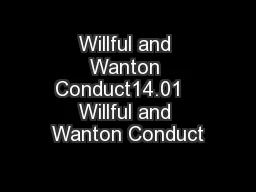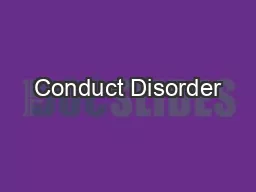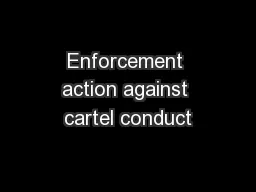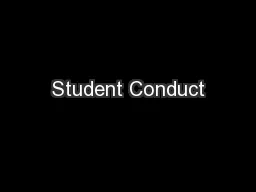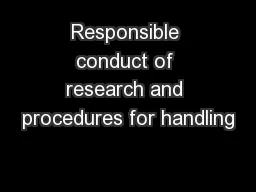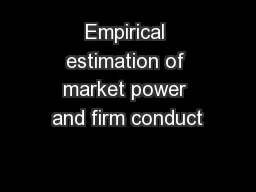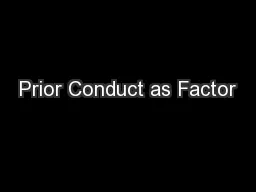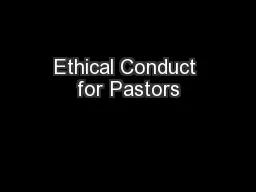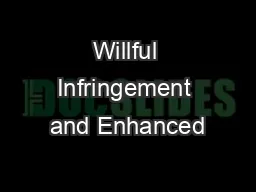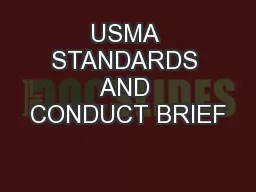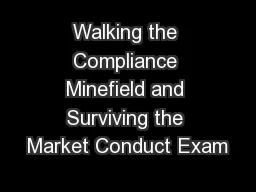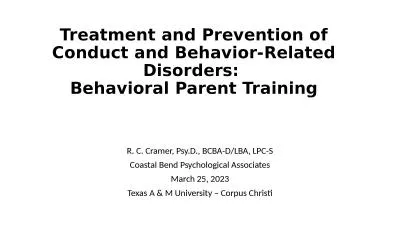PDF-Willful and Wanton Conduct14.01 Willful and Wanton Conduct
Author : ellena-manuel | Published Date : 2015-12-04
Section 14 Page 1 of 5 Section 14 Page 2 of 5 1 As a basis for punitive damages Loitz v Remington Arms Co 138 Ill2d 404 563 NE2d 397 150 IllDec 510 1990 Dunn v
Presentation Embed Code
Download Presentation
Download Presentation The PPT/PDF document "Willful and Wanton Conduct14.01 Willfu..." is the property of its rightful owner. Permission is granted to download and print the materials on this website for personal, non-commercial use only, and to display it on your personal computer provided you do not modify the materials and that you retain all copyright notices contained in the materials. By downloading content from our website, you accept the terms of this agreement.
Willful and Wanton Conduct14.01 Willful and Wanton Conduct: Transcript
Download Rules Of Document
"Willful and Wanton Conduct14.01 Willful and Wanton Conduct"The content belongs to its owner. You may download and print it for personal use, without modification, and keep all copyright notices. By downloading, you agree to these terms.
Related Documents

